Costa Rica is a prosperous and diverse country when it comes to nature. With 5% of the world’s species of animals, fish and plant life, 26% of the country consists of conservation territory. Even the country’s currency reflects its link to the natural landscape, with the backs of their colones bills showing a creature native to their country.
Costa Rica is focused on preserving and supporting its natural landscapes and partly achieves this by using renewable energy, with more than 99% of its electricity coming from renewable sources such as wind farms, geothermal energy, and solar power. Adding to the natural wonder of Costa Rica are its 121 volcanoes, seven of which are still active. This Central American country is a tourist hotspot and is one of the most visited international destinations.
The locals speak Spanish, but English is also widely spoken. As a democratic country with no army, Costa Rica is a peaceful place to visit. The government abolished the military in 1948 following a civil war. The locals refer to themselves as Ticos or Ticas and have one of the highest life expectancies in the world, with 77 years as an average.
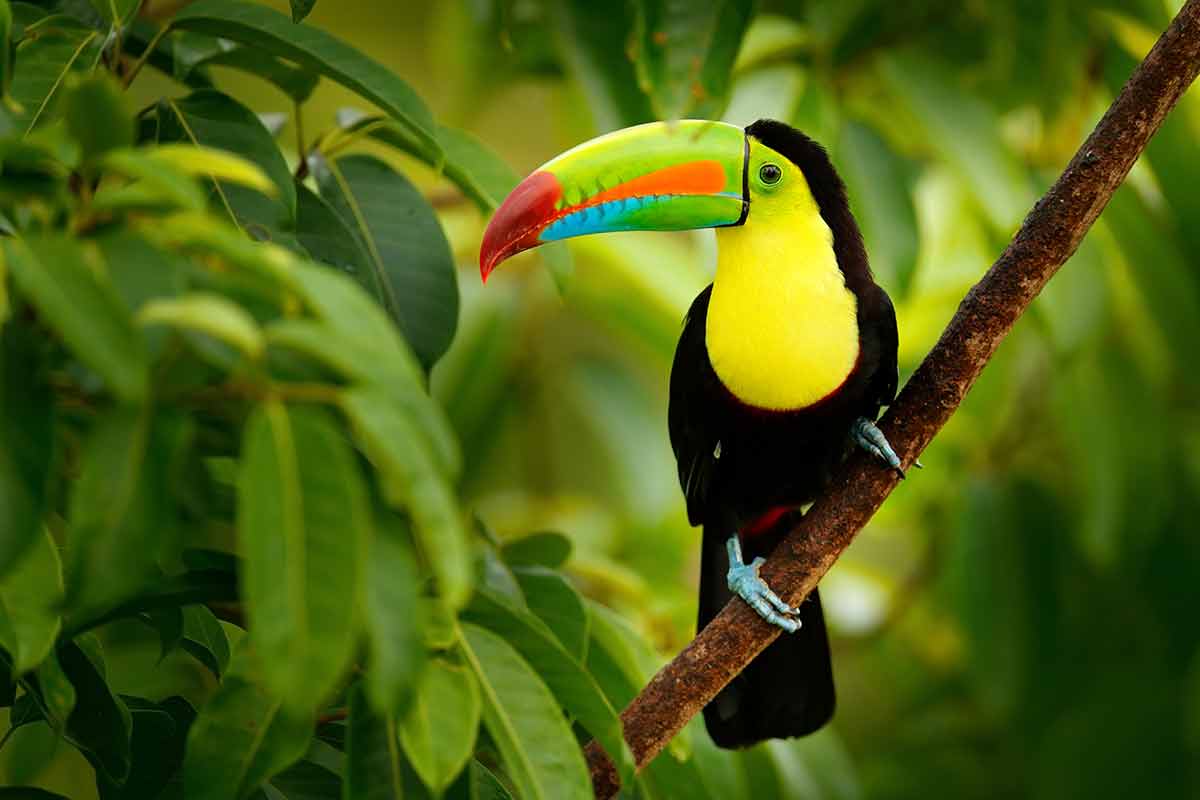
In Costa Rica, make sure to stop in a soda, not a cold fizzy drink but a small, welcoming and informal restaurant that serves traditional fare including chicken and rice, gallo pinto and patacones (crisp and salty plantains) for a low price. Following your meal, head out for a coffee. Costa Rica refers to coffee as ‘el grano de oro’ or the golden grain. The coffee here is served using a chorreador, a form of a pour-over coffee filter, which gives the coffee a silky body and smoky, chocolaty flavour. Costa Rica is a beautiful country filled with breath-taking nature, vibrant and friendly cities, and lust for ‘pura vida’ (pure life), it is no doubt that one of the happiest countries in the world will be on any travel lovers bucket list. Here are 20 incredible natural and historical landmarks in Costa Rica, a Central American gem.
20 Costa Rica Landmarks
Natural Landmarks in Costa Rica
1- Arenal Volcano
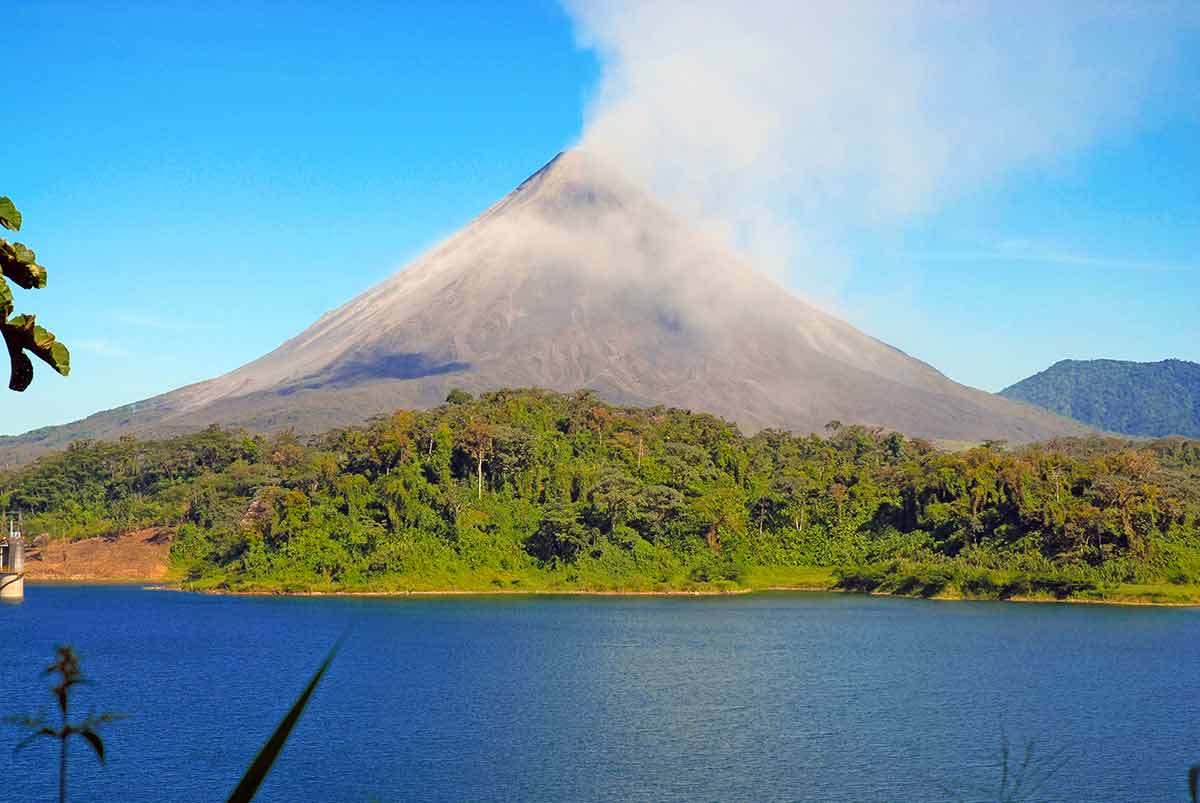
Arenal Volcano is a 5357ft (1633m) volcano that is still active and has consistently flowed lava since 1968, when three craters burst.
During the day, smoke from the volcano is visible, and once the sun sets the red glow of the lava can be seen.
Despite its destructive nature, Costa Rica relies on this powerful landmark for some of its geothermal energy.
The volcano is within a national park of the same name.
While exploring the parkland, look out for some of Costa Rica’s native species, such as howler monkeys, white-faced monkeys and tapir.
Arenal Volcano is at Alajuela Province, San Carlos.
2- Irazú Volcano
Irazú Volcano gets its name from the indigenous word meaning ‘thunder and earthquake mountain’.
Given its active status, the name is certainly apt, although it has not erupted since 1994.
The volcano sits within a natural park of the same name, with flat bare landscapes dotted with bushes towards the volcano’s peak.
It’s a stark comparison to the lush rainforest on the Caribbean side of the volcano.
Due to its recent activity, few animals are within the parkland; however, porcupines, coyotes, and owls still call the park their home.
Irazú is the highest active volcano in the country, at 11,260 ft (3432m) tall.
Irazú is at Cartago Province.
3- La Paz Waterfall Gardens
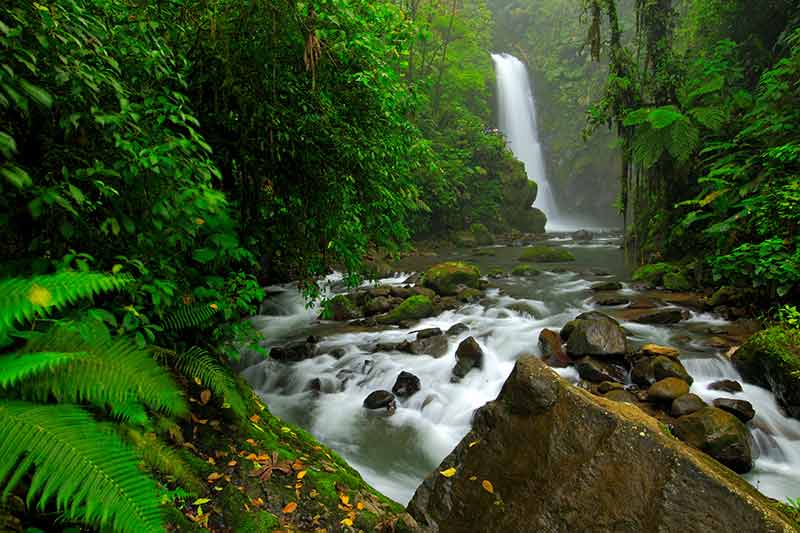
La Paz Waterfall Gardens is a national park and the largest wildlife sanctuary in Costa Rica.
The sanctuary has over 100 species of animals, including hummingbirds, jaguars and frogs.
The park also includes a cloud forest covering 3.5km (2.17miles).
One of the biggest allures to the gardens is the waterfalls, of which there are five.
The waterfalls are easily accessible through hiking trails into the park and the cloud forests.
They vary in height and majesty, from the smallest waterfall, Escondida, falling over 5m (15ft), to the tallest waterfall Magia Blanca cascading over 37m (120ft).
La Paz Waterfall Gardens is at Vara Blanca, Alajuela.
4- Rio Celeste
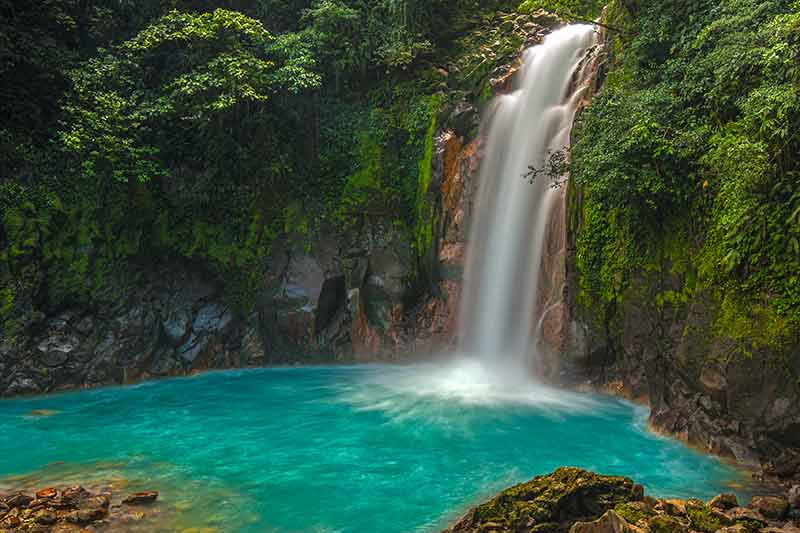
The Rio Celeste is a stunning blue river that runs through the Tenorio Volcano National Park.
The river topples over a waterfall into a deep blue pool below.
According to local legend, God dipped his paintbrush into the waters of the Rio Celeste whilst painting the sky, therefore turning it blue.
Science, however, shows that the blue hue of the river comes from a high concentration of aluminosilicate particles transforming the water into the blue it is famous for.
However, the river is not always blue as if the river moves quickly, more mud is churned into the water.
Rio Celeste is at Cantón de, Provincia de Alajuela, Guatuso.
5- Monteverde Cloud Forest
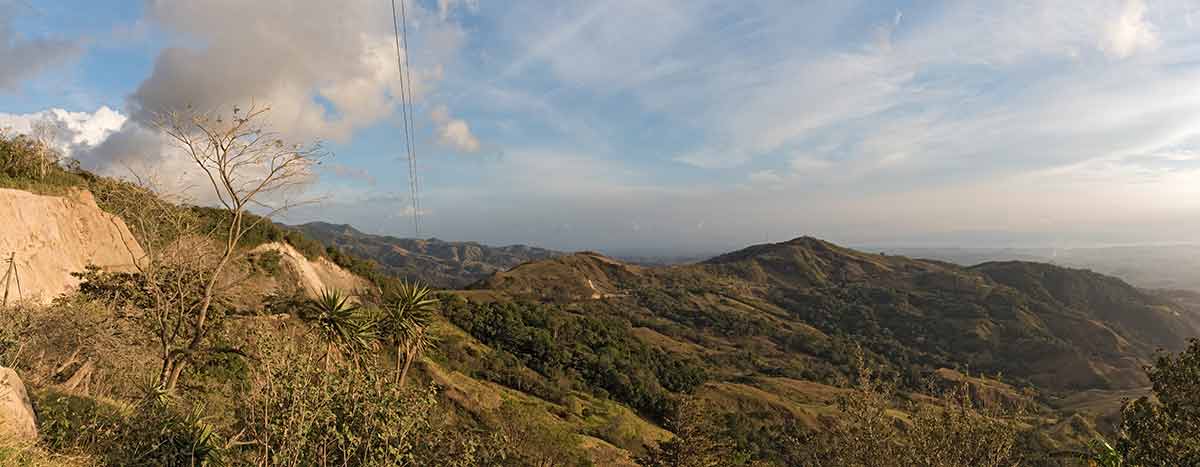
Cloud forests are formed from low hanging clouds or fog that covers thick forest and jungle at altitude.
Within the Monteverde Cloud Forest, visitors can walk through the clouds, across rope bridges, and through lush jungle.
As the clouds are so low, plant and animal life can thrive in the warm and humid climate, allowing for significant biodiversity levels.
Within the cloud forests are many orchid species and bromeliads not found anywhere else.
Monteverde Cloud Forest is at Carretera a Reserva de Monteverde, Provincia de Puntarenas, Monteverde.
6- Parque Nacional Manuel Antonio
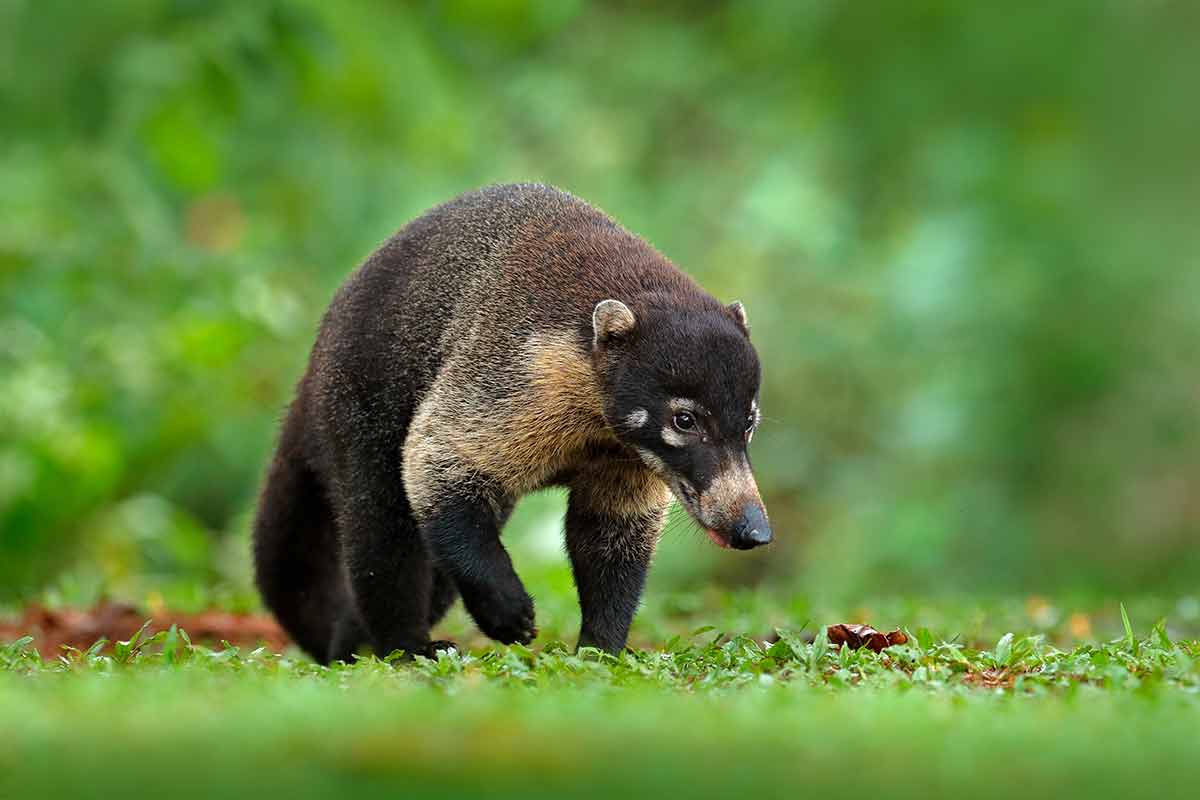
Parque Nacional Manuel Antonio covers 1950 ha of land and includes 55000 marine ha.
Parque Nacional Manuel Antonio was founded in 1972 to preserve the natural landscape of Costa Rica for future generations.
The park features diverse landscapes, including rain forests and coral reefs.
Within the park are sloths, squirrel monkeys and iguanas.
The beaches and reefs offer homes to turtles and colourful crabs, making the coastal areas perfect for snorkelling.
Parque Nacional Manuel Antonio is at Puntarenas Province, Quepos.
7- Isla Del Coco
Isla Del Coco began as a pirate hideout and the inspiration behind Treasure Island by Robert Louis Stevenson.
The island is formed from the tip of an ancient volcanic mountain sitting in the Pacific.
It is covered in dense rainforest and like so many rainforests in Costa Rica, it is filled with a diverse range of species that have, due to the nature of their surroundings, adapted into species found nowhere else.
Adapted species found here are referred to as endemics and include lizards, freshwater fish and bird species.
Isla Del Coco is at Puntarenas Province.
8- Tortuguero
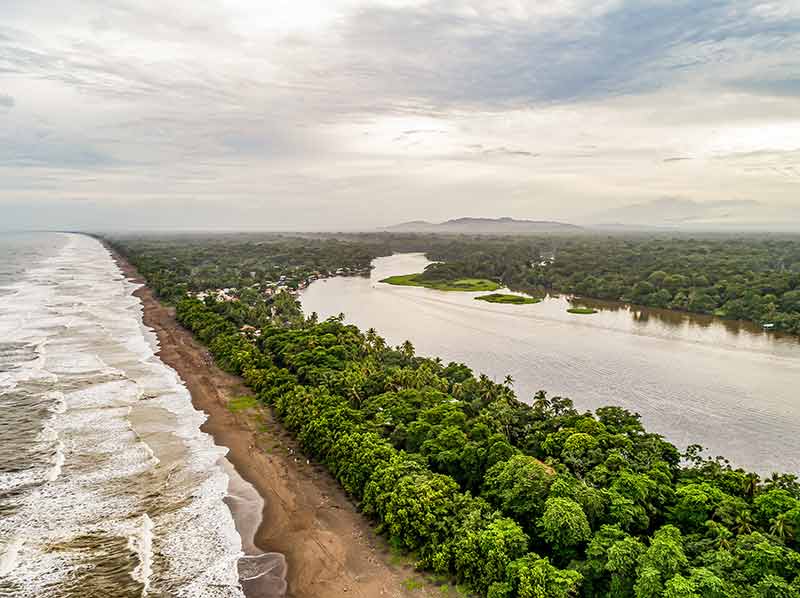
Tortuguero is a perfect natural landmark for turtle lovers and there’s a beach trail where turtles nest.
The trail is accessible by foot, but also by boat, which offers the best views.
The name Tortuguero translates to ‘turtle catcher’.
The park was part of an archipelago of volcanic islands, and over the centuries, as sand built up, nature formed the haven for nesting turtles.
Green Sea Turtles and leatherback turtles are often found nesting on the beaches here.
As the island is protected, Green Sea Turtles, which were at one time near extinction due to being hunted for their meat, are now part of a tagging program aimed at conserving such species.
Tortuguero is at Limón Province.
9- Tabacon Hot Springs
Tabacon Hot Springs sits at the base of the Arenal Volcano, where streams of hot mineral water feed the springs.
Jaime Mikowski, a local architect, bought the land in the 1980s and transformed the area into a hot spring complex complete with a restaurant and hotel.
Aside from creating a hot spring spa, Mikowski wanted to reforest the areas surrounding the hot springs that had previously been removed for farmland or timber production.
The springs are still naturally flowing and form the largest network of natural hot springs in the country.
Tabacon Hot Springs is at 21007, Provincia de Alajuela, La Fortuna, 21007.
10- Poás Volcano Crater
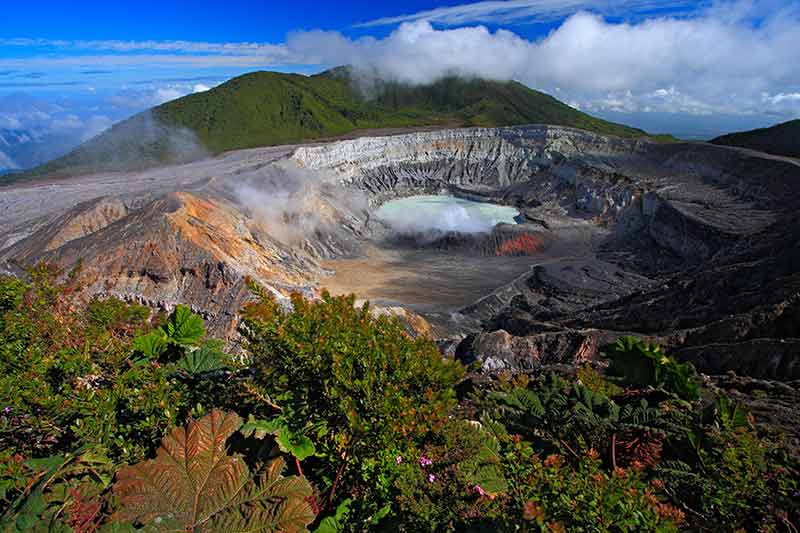
Poás Volcano Crater is a spectacular and unique natural landmark in Costa Rica.
The crater is the largest active volcanic crater globally at nearly 1 mile (1.6km) in diameter.
At 8885ft (2708m) above sea level, the height and the ability to drive very close to the crater itself has lead to the volcano and crater being a top-rated tourist attraction.
The crater is filled with rainwater, and the sulphur from the volcano causes it to bubble and even smoke.
Geysers regularly explore up from the surface of the water.
Poás Volcano Crater is at Alajuela Province, Poás.
Discover more Famous World Landmarks:
- 25 Australian Landmarks
- 20 New Zealand Landmarks
- 20 African Landmarks
- 21 Egyptian Landmarks
- 20 Jordan Landmarks
- 10 Tasmanian Landmarks
- 20 Antarctica Landmarks
11- La Fortuna Waterfall
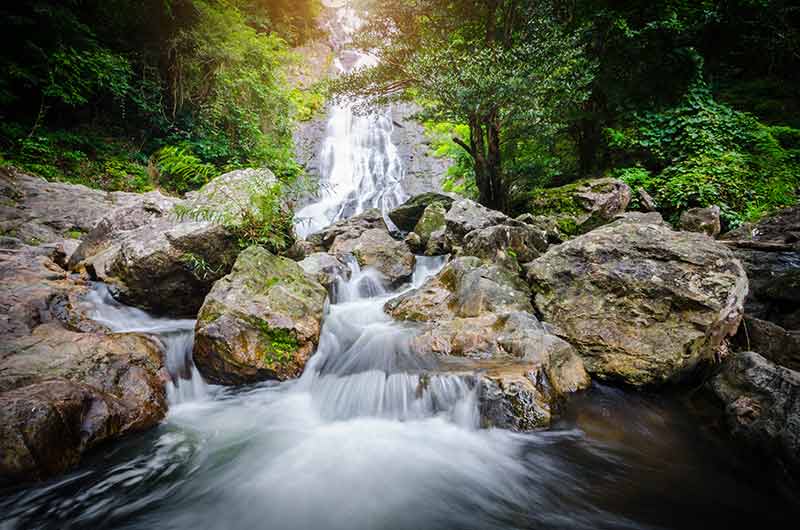
La Fortuna Waterfall is nestled within the Areal Volcano National Park. The waterfall is 70m (230ft) high, making for a pleasant hike through the park to see it.
The walkway to the waterfall consists of 530 steps with regular rest areas making the hike more accessible.
The walk through the rainforest offers the chance to glimpse toucans and monkeys.
Once at the falls, visitors often picnic along the river’s shoreline and some even swim in its icy waters.
The falls are privately owned, however, the entrance fee is put back into preserving the surrounding parkland and used in conservation projects.
La Fortuna Waterfall is at Alajuela Province, La Fortuna.
12- Carara National Park
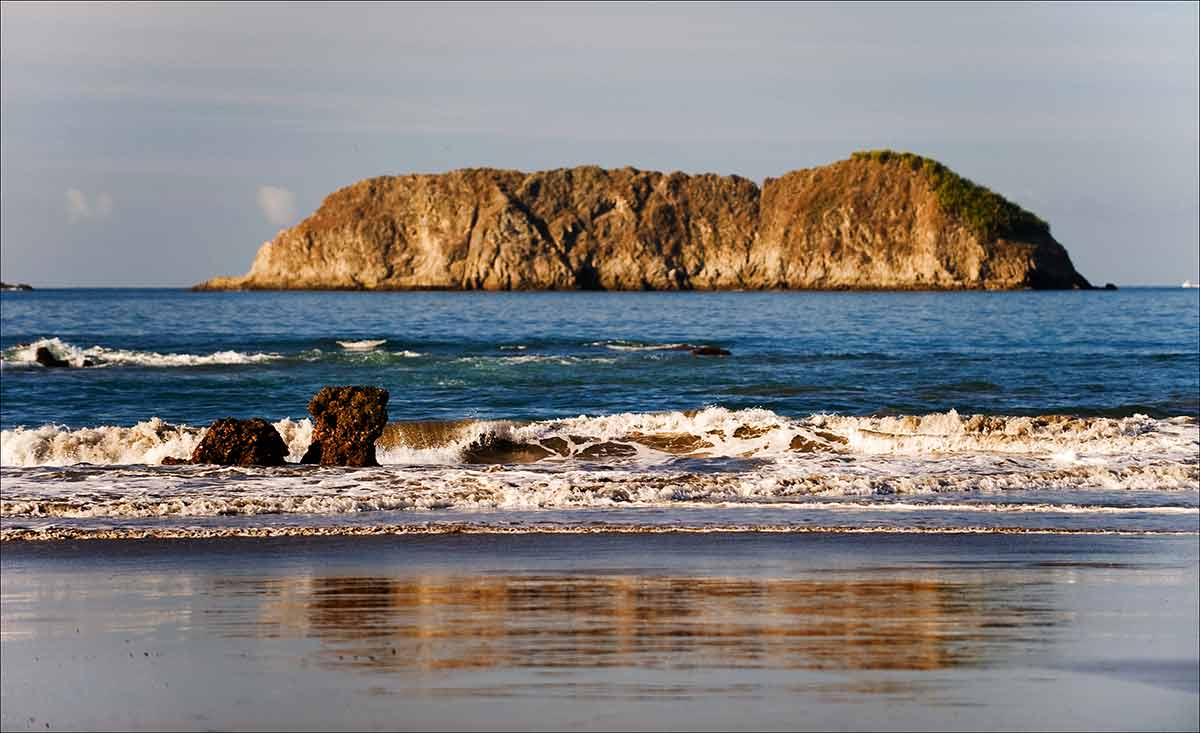
Carara National Park is a famous national park in Costa Rica, with many field trips, cruise ship day trips, and regular visitors calling at the park daily.
The National Park is a protected area covering 400 ha and consists of tropical rainforest and tropical dry forest.
The national park is filled with many hiking trails leading into the rainforest, taking in lagoons and marshes.
Carara is popular with bird watchers who head to the park to see Chestnut-backed Antbirds and Keel-billed Toucans.
Visitors can also find possum, two-toed Sloth and armadillo within the park.
Carara National Park is at Puntareanas Province.
For more amazing European Landmarks, read:
- 30 Spain Landmarks
- 20 Switzerland Landmarks
- 22 Germany Landmarks
- 35 London Landmarks
- 30 France Landmarks
- 20 Italy Landmarks
- 20 Greece Landmarks
- 20 Russia Landmarks
- 20 Scotland Landmarks
- 20 Ireland Landmarks
- 21 Wales Landmarks
- 20 Turkey Landmarks
- 20 England Landmarks
- 20 Hungary Landmarks
- 21 Romania Landmarks
- 20 Ukraine Landmarks
- 20 Athens Landmarks
- 20 Rome Landmarks
- 20 England Landmarks
- 20 Portugal Landmarks
- 20 Poland Landmarks
- 20 Iceland Landmarks
- 20 Bulgaria Landmarks
- 21 Croatia Landmarks
- 20 Bulgaria Landmarks
- 20 Austria Landmarks
- 21 Finland Landmarks
- 20 Sweden Landmarks
- 20 Denmark Landmarks
- 20 Belgium Landmarks
- 20 Netherlands Landmarks
- 20 Barcelona Landmarks
- 21 Czech Republic Landmarks
- 20 Landmarks in Paris
- 20 Landmarks in Liverpool
- 10 Istanbul Landmarks
Historical Landmarks in Cost Rica
13- Museo Nacional de Costa Rica
Museo Nacional de Costa Rica was founded in 1887 to provide Costa Rica with a safe space to house artefacts and open up opportunities for study and education on natural and artistic products.
The museum focuses its collections on cultural and national heritage and scientific research on the artefacts on display.
Exhibitions include ‘Masters of the Night’, a taxidermy display of nocturnal creatures native to Costa Rica, ‘The History of Costa Rica’ with includes artefacts dating back to the 16th century, and ‘The Butterfly Garden’, a living display of plants and 14 species of butterflies.
Museo Nacional de Costa Rica is at 749-1000 San José.
14- Diquís Spheres
The Diquís Spheres are a series of stone spheres, varying in size and dating to pre-Colombian times.
During the 1930s, as workers cleared land, many stone spheres were unearthed.
The spheres are almost perfectly round and appear to be manmade.
The spheres vary in size, with the largest over 2m (6.6ft) in diameter and weighing more than 16 tons.
Although archaeologists are unsure of the purpose of the stones, it’s possible an extinct civilisation created them.
Many spheres have been moved from their original locations and sold as garden decorations, however, a collection of six spheres are looked after by the National Museum.
Diquís Spheres is at Unnamed Road, Palmar Sur.
15- Guayabo National Monument
Guayabo National Monument is one of the largest and most significant architectural finds in Costa Rica, and a must-visit historical landmark.
The site was discovered in 1968 in the rainforest.
It is believed that a civilisation of around 10,000 people lived at the site approximately 3000 years ago.
The city was once an important location for politics, culture and religion, but was abandoned for reasons that remain unclear.
Popular belief follows two potential outcomes; firstly, a plague that may have wiped out the city’s citizens, secondly, a war may have broken out, causing not only death but displacement.
Artefacts found at the site are on display in the National Museum.
Guayabo National Monument is at Cartago Province, Turrialba.
16- Ruins of Iglesia de Nuestra Señora de la Limpia Concepción
Iglesia de Nuestra Señora de la Limpia Concepción is all that remains of the village of Ujarrás, which was destroyed by a flood in 1833.
The church was built in 1693 from stone.
One of its most famous and important features was a painting of the Virgin.
Local legend tells of the discovery of the painting and clerics attempted to move the painting with no success.
So, they built the church around it.
As the church was in a floodplain and an area susceptible to earthquakes, authorities eventually moved the painting for safety.
Each year a procession of people heads from the town up to the ruins of the church for Mass to celebrate the day of La Virgen de Ujarrás.
Ruins of Iglesia de Nuestra Señora de la Limpia Concepción is at Cartago Province Ujarrás.
17- Teatro Nacional de Costa Rica
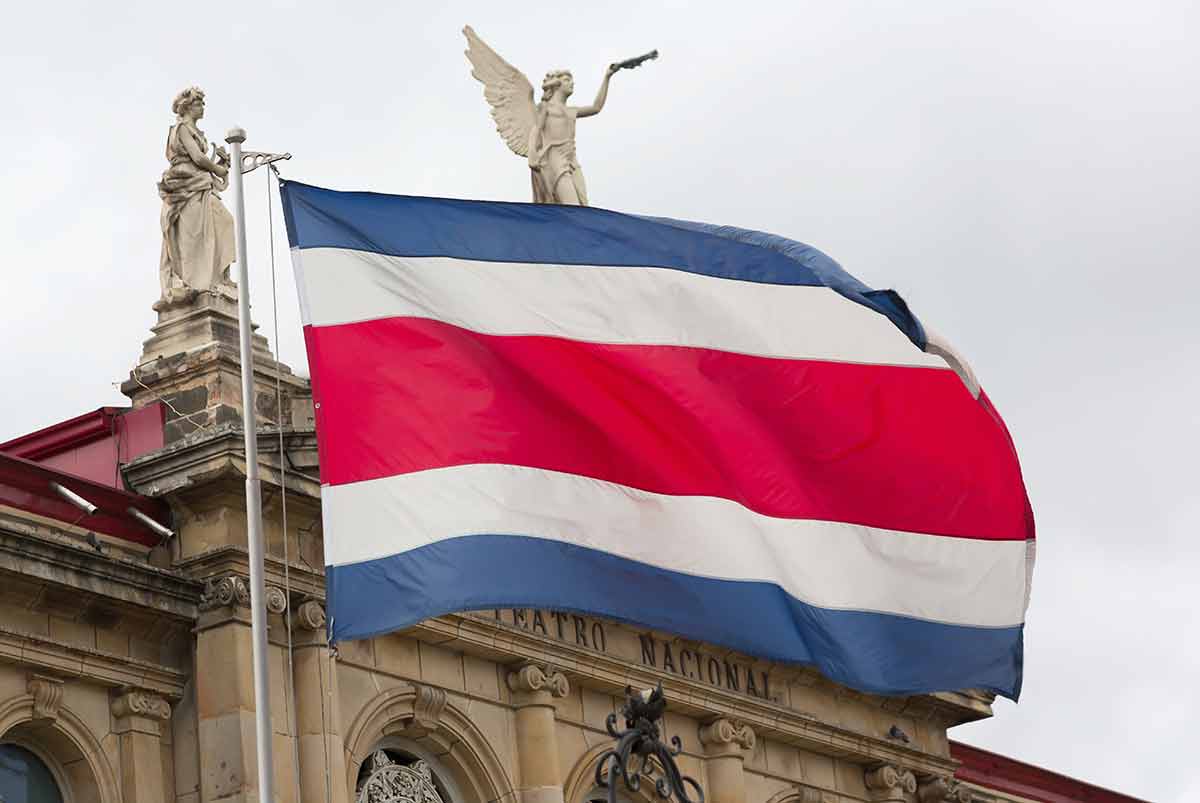
Teatro Nacional de Costa Rica was built in 1891 and opened to the public in 1897. The first performance was of ‘Faust’ by Johann Wolfgang von Goethe.
The theatre was financed through a tax placed on coffee by the then president of Costa Rica.
The theatre features many important statues and works of art, such as the statues of Calderón de la Barca and Ludwig van Beethoven.
A mural of the countries key exports features inside the theatre.
The mural, ‘Allegory of Coffee and Bananas,’ was painted by Italian artist Aleardo Villa.
Teatro Nacional de Costa Rica is at Avenida 2, Calle 1, Catedral, San José
18- Basilica de Nuestra Senora de Los Angeles
Basilica de Nuestra Senora de Los Angeles or Basilica of the Angels is one of the most important churches in Costa Rica and a must-visit historical landmark.
The basilica is a sanctuary named after the Virgin of Los Angeles, or La Negrita, the patron saint of Costa Rica.
The church was built using local cocoa farmers’ contributions that are celebrated through the carving of an ornate altar.
In 1777 the altar was started and features leaves and cocoa pods.
Basilica de Nuestra Senora de Los Angeles is at Calle 1, Provincia de Cartago, Cartago.
19- Rivas Megalithic Monuments
The Rivas Megalithic Monuments is an important archaeological site in Costa Rica and a must-visit for Central American history.
Artefacts found at the site include vast collections of pottery, jewellery and musical instruments dating back to the Chiriquí period, which thrived between AD 750-1500.
The site was once a residential area, with many structures being round in shape and built using river cobbles.
There are many standing stones, although their meaning is still unclear.
Within the site are many archaeological sites and ruins that can still be visited, however some have been lost to farmland.
Rivas Megalithic Monuments is at Rivas.
20- Petroglyphs of Cacao
Petroglyphs of Cacao are petroglyphs that cover the Cacao Volcano.
There are several hundred petroglyphs within this area, with many being discovered as recently as 2017.
The petroglyphs were carved by the Chirigua peoples and dating back more than 1500 years.
They show people, animals and farming techniques and are carved directly into rocks.
The petroglyphs are surrounded by cloud forest, making the hike to see them an enriching journey.
Petroglyphs of Cacao is at Parque Nacional Guanacaste, Provincia de Guanacaste.
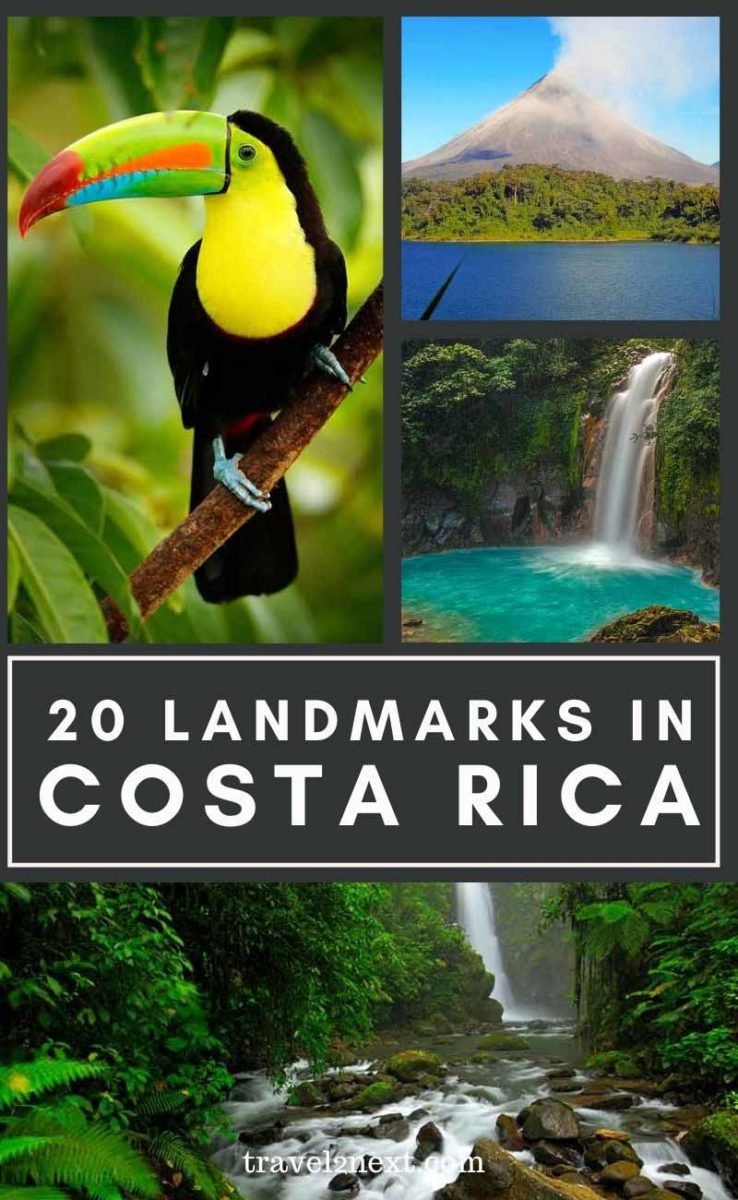
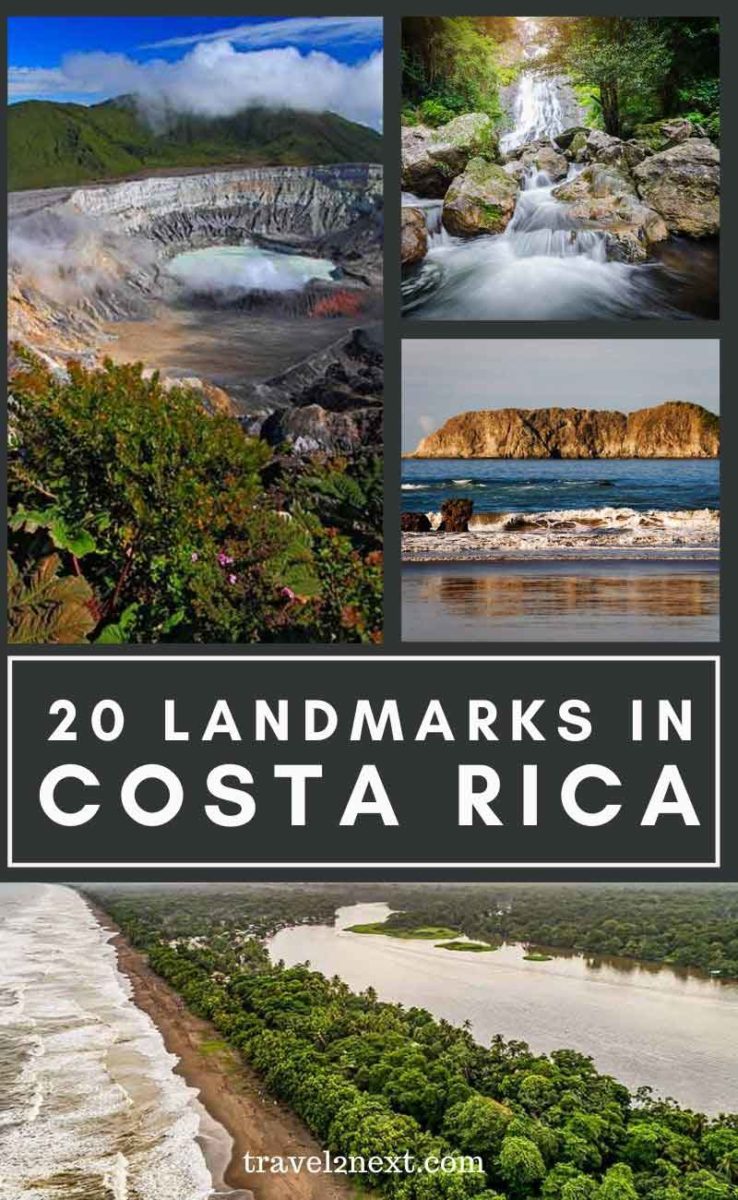
Plan Your Trip

Rent A Car – Find the best car rental rates at Discover Cars. They compare car hire companies to provide you with the best deal right now.

Find A Hotel – If you’re curious about this article and are looking for somewhere to stay, take a look at these amazing hotels.

